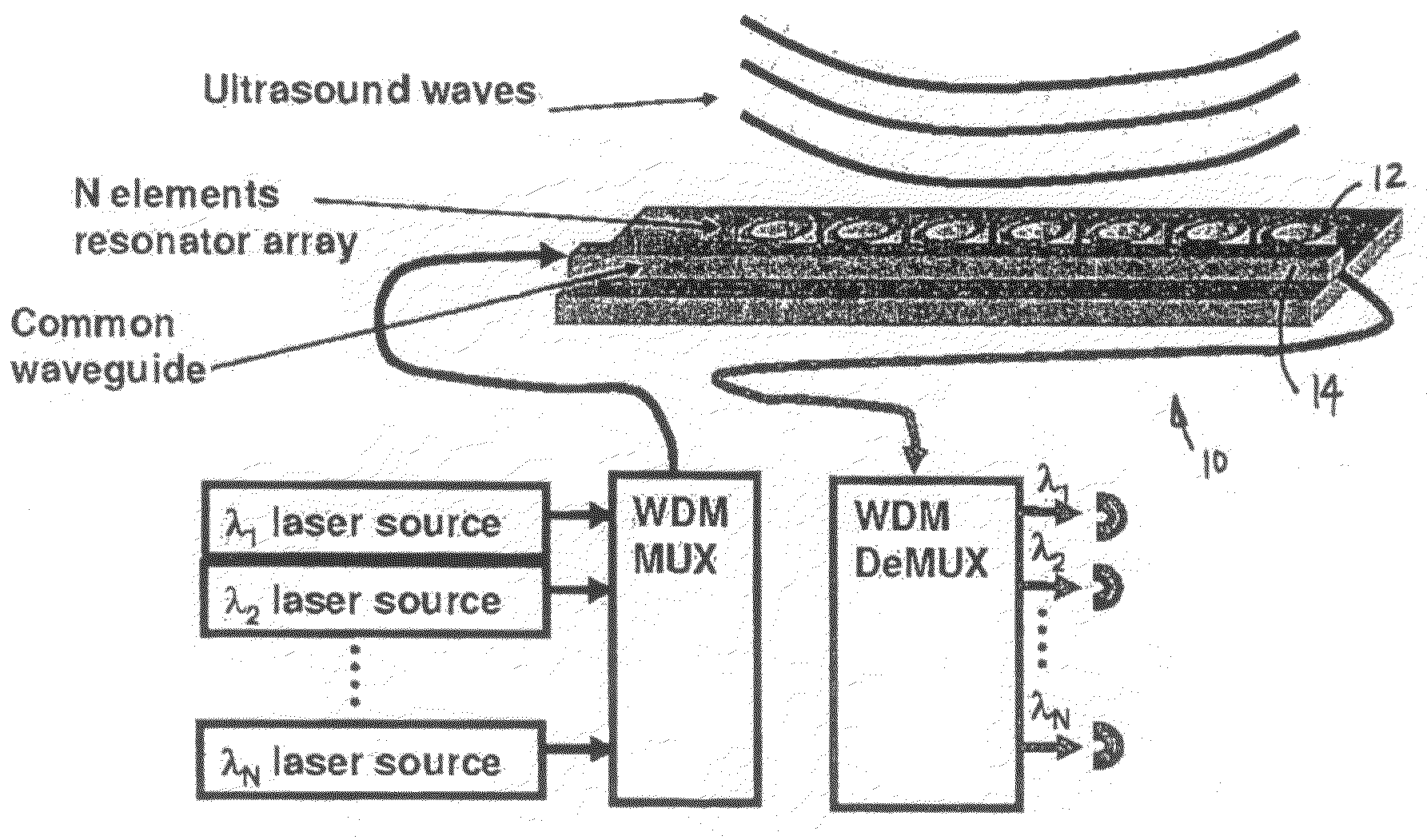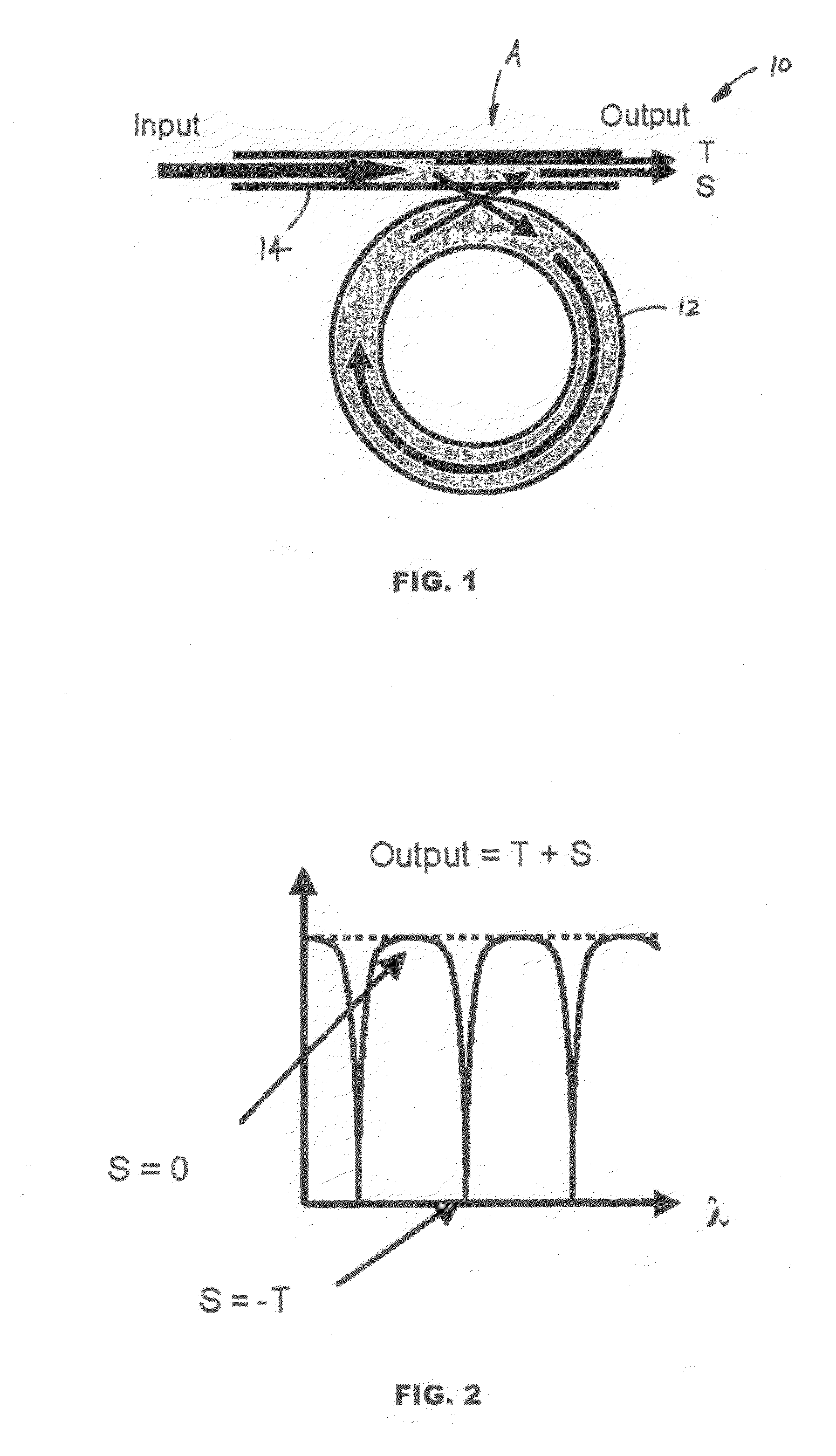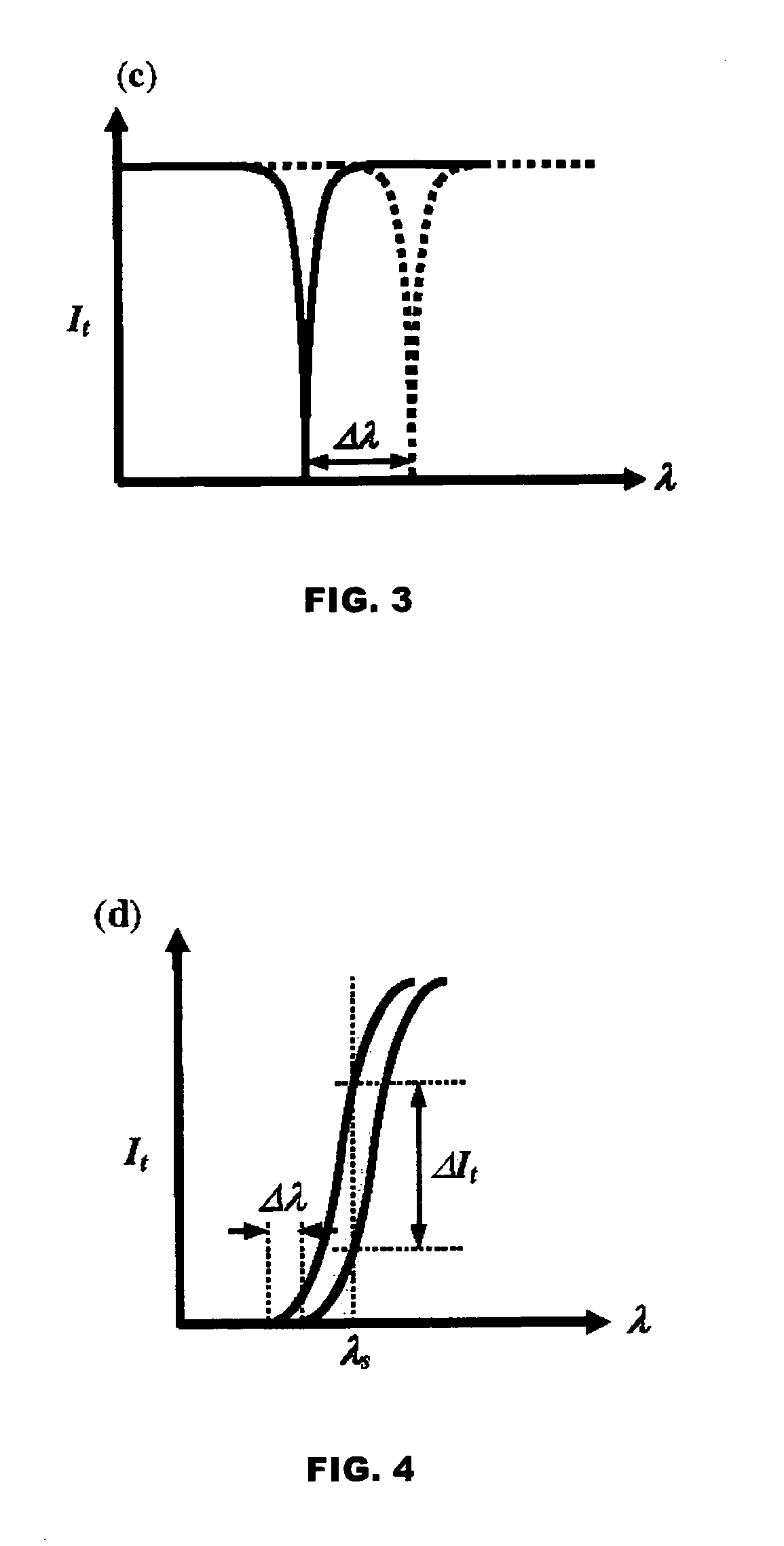High frequency ultrasound detection using polymer optical-ring resonator
a polymer optical ring and high frequency ultrasound technology, applied in the field of ultrasonic detection, can solve the problems of reduced element size, device inability to show early stages of atherosclerosis, signal noise increases with reduced element size, etc., to achieve the effect of increasing detection noise, signal noise increasing, and reducing element siz
- Summary
- Abstract
- Description
- Claims
- Application Information
AI Technical Summary
Benefits of technology
Problems solved by technology
Method used
Image
Examples
Embodiment Construction
[0033]The following description of the preferred embodiments are merely exemplary in nature and is in no way intended to limit the present teachings, its application, or uses.
[0034]The present teachings are believed to boost optical detection of ultrasound from the current experimental system carried out on an optical table to a compact and robust device that is perfectly suitable for interventional imaging application. The integrated optics concept and the novel implementation of photonic microresonators as ultrasonic detectors are the corner stones of the present teachings.
[0035]From a medical perspective, the greatest impact of the present teachings would be on the treatment of cardio-vascular diseases. A device based on the present teachings can feature one or more of the following:[0036]1. High-resolution imaging revealing detailed structures such as the thin fibrous cap covering vulnerable plaque.[0037]2. High image contrast obtained by realizing several imaging modalities on ...
PUM
 Login to View More
Login to View More Abstract
Description
Claims
Application Information
 Login to View More
Login to View More - R&D
- Intellectual Property
- Life Sciences
- Materials
- Tech Scout
- Unparalleled Data Quality
- Higher Quality Content
- 60% Fewer Hallucinations
Browse by: Latest US Patents, China's latest patents, Technical Efficacy Thesaurus, Application Domain, Technology Topic, Popular Technical Reports.
© 2025 PatSnap. All rights reserved.Legal|Privacy policy|Modern Slavery Act Transparency Statement|Sitemap|About US| Contact US: help@patsnap.com



